The Girl Can't Help It (1956)
- adamsoverduereview
- Mar 27
- 6 min read
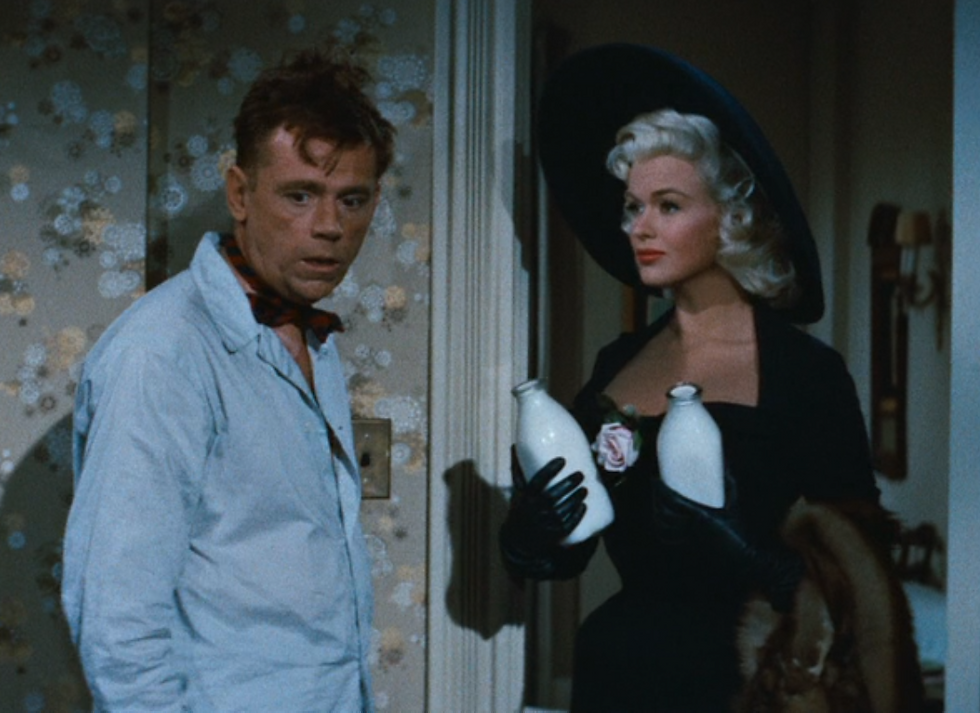
After watching The Day the Earth Blew Up, I was still in a Looney mood. So I decided it was finally time to watch another film from director Frank Tashlin. Tashlin spent more than a decade (1929-1944) as an animator, animation director, and comic strip cartoonist. He bounced back and forth between working for Warner Brothers, Disney, Ub Iwerks, and Screen Gems. Tashlin was credited with bringing new techniques in animation camera work to Warner in the 1930s. He left animation in 1946 and became a gag writer for Lucille Ball and the Marx Brothers, and a screenwriter for comedians Bob Hope and Red Skelton. That led to Tashlin being brought in as a replacement director to finish the Bob Hope film The Lemon Drop Kid (1951). From there he went on to direct over twenty feature films, often incorporating visual language and jokes from his cartoon days into his live-action work. A few years ago I watched Tashlin’s Dean Martin/Jerry Lewis comedy Artists and Models (1955) and enjoyed the combination of goofy gags, inventive direction, and sexy ladies. The Girl Can’t Help It (1956) seemed like it would provide those same elements, so it went on the watchlist (and sat there until now).
The movie opens with a fourth-wall breaking introduction from star Tom Ewell about his character and the movie we are about to watch. Actually, fourth-wall breaking doesn’t even fully describe it, as Ewell snaps his fingers and expands the edges of the picture wider from the almost square Academy ratio to “the grandeur of Cinemascope.” His monologue is eventually drowned out by the raucous theme song blasting out of a jukebox. It all establishes the irreverent tone and elastic reality that drive the rest of the movie.
Ewell plays Tom Miller, a formerly successful agent who currently has no hot clients and a lot of bills and bar tabs stacking up (one manager accuses him of bringing acts to audition just for the free drinks). That is until he is called to a meeting with mobster Marty “Fats” Murdock (Edmund O’Brien), who makes him an offer he can’t refuse. Fats shows Tom newsreels from his “glory days” when he was “Slim” Murdock until his successful slot machine racket was broken up and he went into exile. After too much European cuisine he became “Fats.” Thanks to that former infamy, Fats feels like he is still a somebody. He has a woman he wants to marry, but she is just a nobody, and that won’t do. Fats says he will pay Tom well (including paying off his debts) if he can make Fats’s girl a famous singer so they can be “compatible.” Tom is trying to explain how this could be difficult or impossible, but then he sees the bombshell in question, Jerri (Jayne Mansfield). Without hearing her sing or even say a word, Tom agrees to the deal.
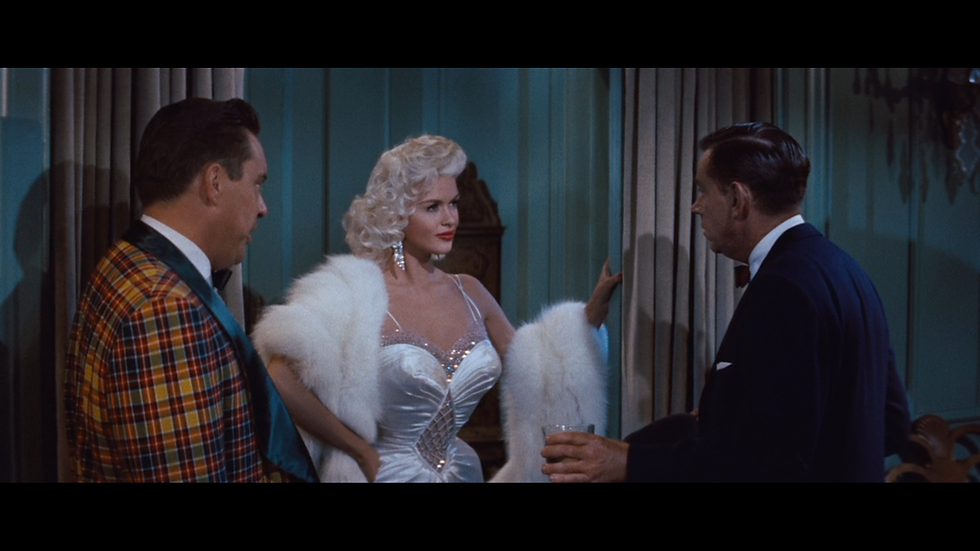
Tom takes Jerri around town in an eye-popping red dress (possible inspiration for Jessica Rabbit?), racking up interest and offers from venue managers just by having Jerri walk by.
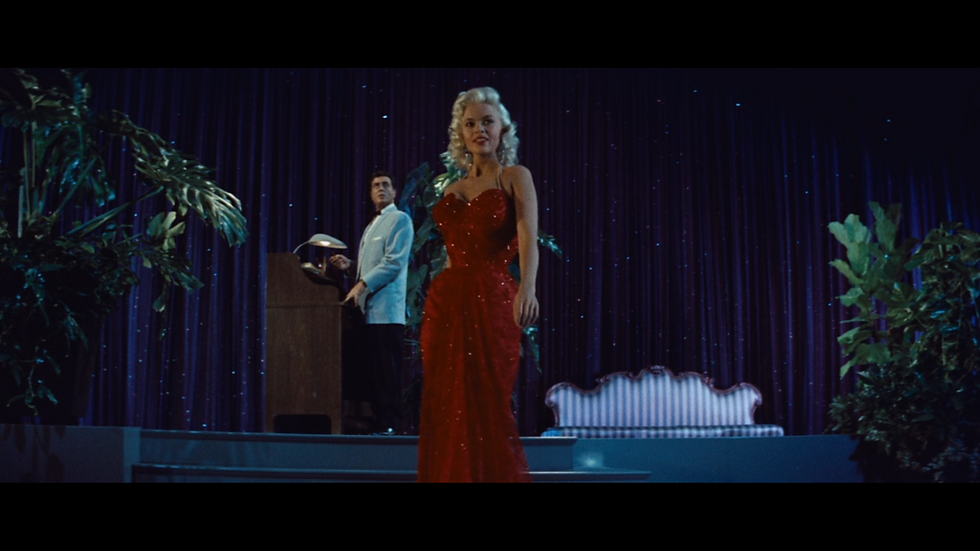
As they get to know each other, Jerri reveals she has no interest in fame and just wants to be a happy homemaker, but Fats doesn’t even like to see her in an apron. Writer Nathan Rabin coined the term “Manic Pixie Dream Girl” for the 21st century movie phenomena of quirky cute but thinly drawn female characters that seem to exist mostly to inspire or love the male lead. Jerri would be a “Mellow Bombshell Domestic Gal,” almost preternaturally even-tempered and good-natured, impossibly curvy and gorgeous, but at the end of the day she just wants to get wifed up and make dinner. The movie doesn’t feel like it is making any kind of judgement or endorsement, though, as the world and characters are too cartoon-y and caricatured for anything to be taken seriously.
Jerri was a small town girl and daughter of one of Fats’s former criminal associates, and she feels she owes him. Between Jerri’s lack of interest in fame, growing affection between her and Tom, and the discovery that her voice shatters lightbulbs when she tries to sing, Tom tries to convince Fats to give up on their plan. Then Fats gets inspired and has Jerri “sing” the role of a prison siren in a recording of a song he wrote in prison, “Rock Around the Rockpile.” He dispatches Tom to meet with Wheeler, the mobster who runs the jukeboxes, to make it a hit. Wheeler is interested until he discovers his old mob rival Fats wrote the song. Things escalate as Fats tries to muscle into the jukebox game and has his assistant Mousie spy on Tom and Jerri. Eventually there are assassination attempts, declarations of love, surprise reveals, and more big music numbers.
This film is fast-paced and funny, with plenty of one liners and memorably stylized moments. Jerri simply walking down the street breaks the laws of physics as a man looking at her melts ice, among other gags.
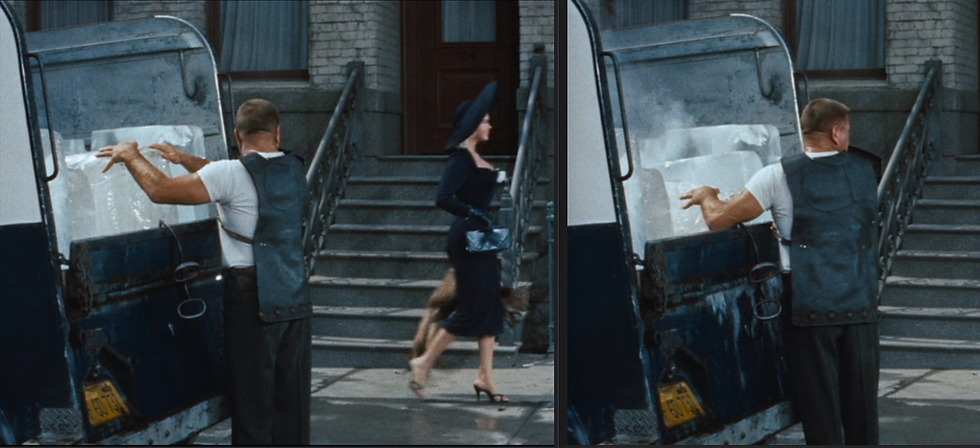
Tashlin doesn’t just use these techniques for humor. There is a scene where Tom plays a record by Julie London (a real singer/actress), the woman he loved but drove away by focusing on her career. He sees apparitions of her appear around his house, ghosts of old memories singing to him in a simple but wistful effect.
The only thing that kept me from fully loving this movie was some of the music. Any time you have a movie that stops for multiple music performances, a lot of your enjoyment is going to depend on those tunes. The titular theme song was written by the film’s composer Bobby Troup and performed by Little Richard, and it is a banger. I can see why it has been re-used, referenced, covered and sampled over the decades. We also get to see Little Richard on-screen burning down the house performing two other songs. This was just a year after he blew up with “Tutti Frutti,” which had been a hit in the US and the UK.
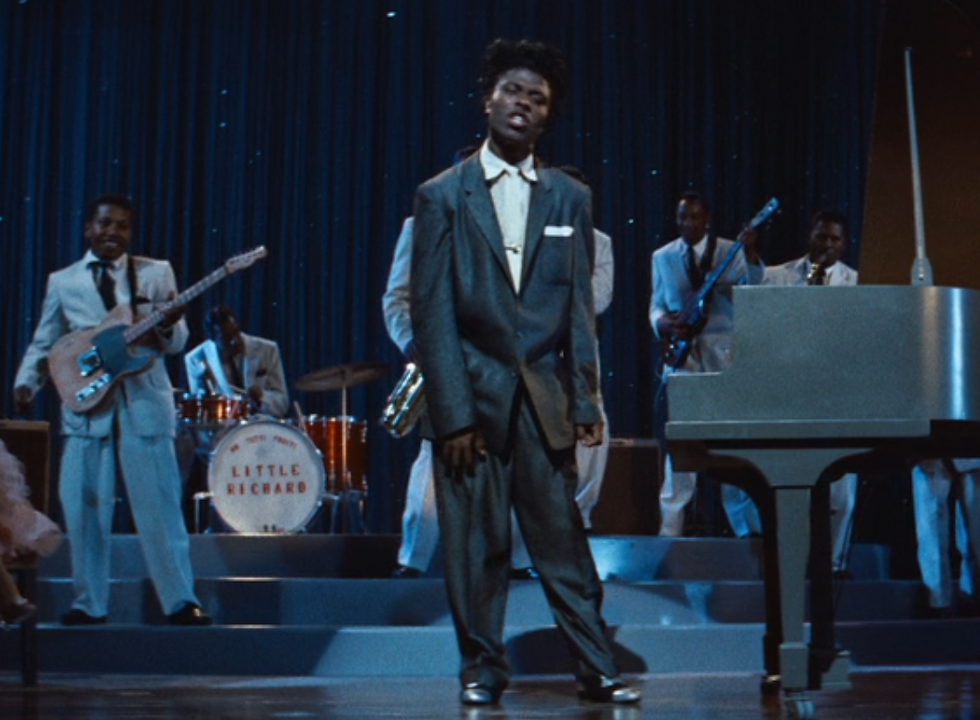
The other acts are a mixed bag. Some I enjoyed, others were mediocre or even grating ("Cinnamon Sinner" made me wish I could punch a song in the face). Somehow I didn’t realize that “Rock Around the Rockpile” was a parody of “Rock Around the Clock.” By the end of the movie, the repetition of that silly ass song and the goofily gregarious final performance became very funny to me. It has been popping up in my head for days since and making me giggle, “ONE rock! TWO rocks!..."
This has also aged much better than many other movies I have seen that deal with rock and roll or other emerging music genres or subcultures. I think a lot of that comes from Tashlin’s generally irreverent tone. So many movies try to depict the music and musicians as either pure artists inspiring near-religious fervor in audiences or as hacks cynically trying to exploit their fans, but the reality usually lies somewhere in between. This movie has undeniably rollicking performances from real musicians that it gives time and respect to, but it also makes a plot point of a goofy song with a ridiculous gimmick becoming a huge hit. The skewering is mostly reserved for the business itself, as we see how image, gimmicks, manipulation, and good old fashioned payola or intimidation play a big part in what is shown or sold to the public. No one declares rock music an abomination, and no one proclaims it as the voice of the new generation. Rock and roll won’t save us, it won’t damn us, it's just here to have a good time. Like this movie.
Putting all these musicians onscreen did have an unforeseen long-term effect, though. The movie’s release in the UK was the first time a teen John Lennon saw some of the musicians he was “worshiping” in action. When Lennon met Paul McCartney, McCartney impressed him by playing guitar with the same technique Lennon had seen Eddie Cochran use in The Girl Can’t Help It, so Lennon invited McCartney to join his group the Quarrymen. It remained important to them, as a decade later they interrupted their recording of the song “Birthday” to go to McCartney’s house to watch the movie’s premiere on British television. Jeez, you would think the freakin’ Beatles would have a home theater and their own print of the movie, if a washed up mobster like Fats can!
And now for anyone who read this far, some completely gratuitous images of Jayne Mansfield looking fine:







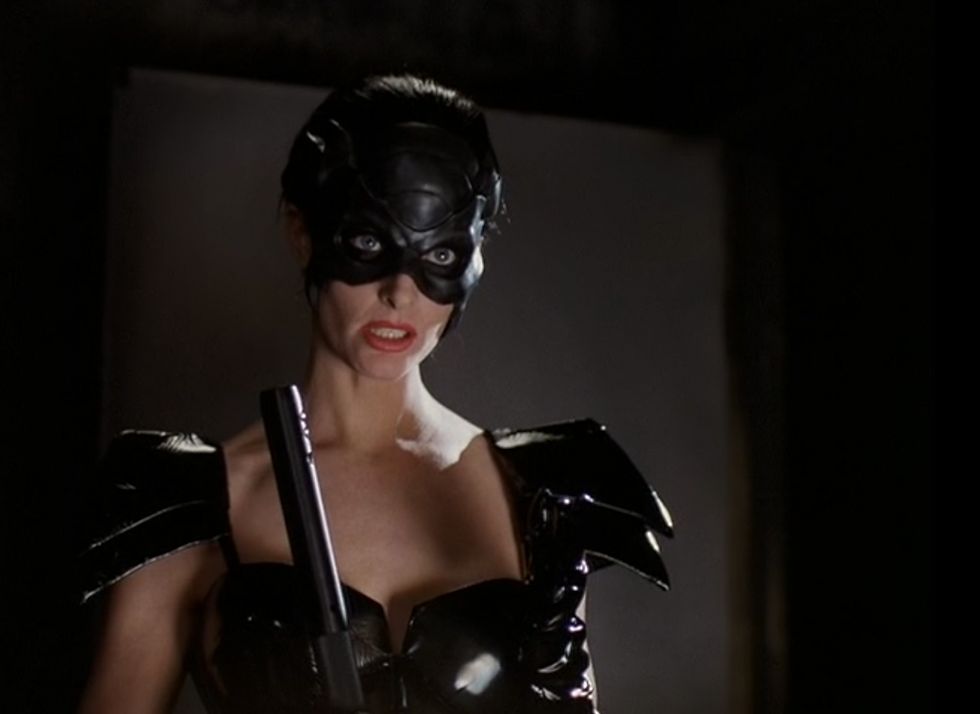

Comments